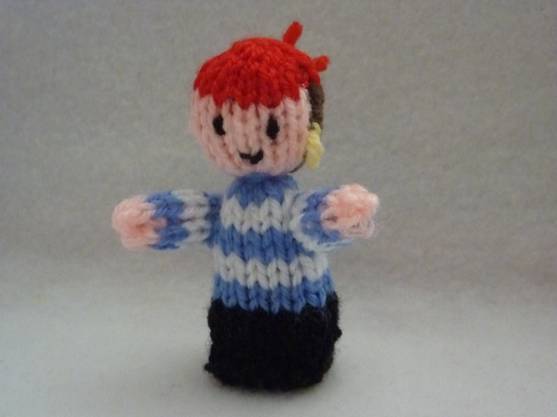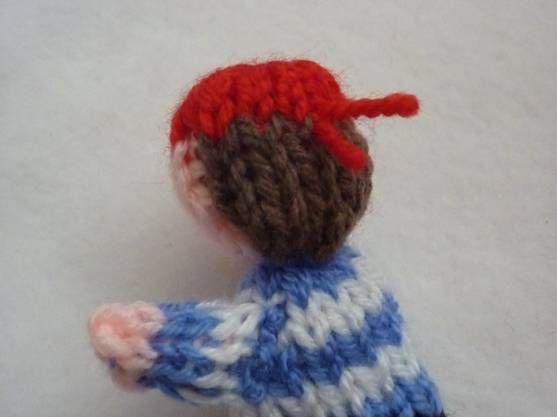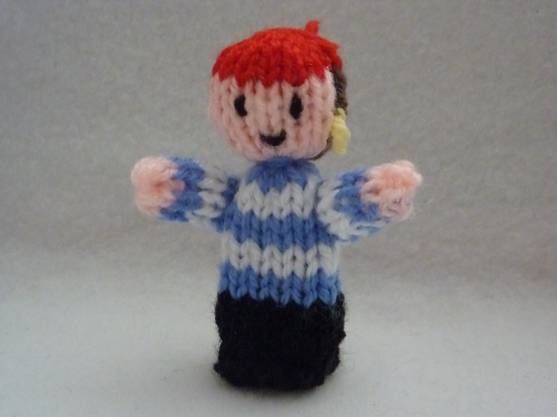
Salty Sam’s Fun Blog for Children
Number 326
Jamaica lnn
Hello Everyone

On the wall of the Rocky Bay Harbour is the Rusty Anchor lnn.
The Rusty Anchor was built to give hospitality to sailors and fishermen travelling up and down this coast and still retains a lot of its original charm. The outside has a more modern façade but the insides are really old.
An inn is an old-fashioned word for hotel, and in the past, travellers would look for inns along the road to find a sustaining meal and a bed for the night when they went on long journeys. There would be room to stable their horses for the night just like hotels have car parks today.
The horses would be fed and watered too.
One of the most famous coaching inns in my part of the country is Jamaica lnn.
Have you heard of it?
The name of Jamaica probably comes from the fact that local important landowners called the Trelawney family had two family members who served as Governors of Jamaica in the 1700s.
Jamaica lnn has a long and interesting history.
Situated right in the middle of Bodmin Moor, a bleak place often beset with wild and windy weather, many travellers were happy to see the view of an inn coming into sight at the end of a long day.
lt was built in 1750, in replacement of another establishment built in 1547, to accommodate travellers using the turnpike between the towns of Launceston and Bodmin.
A turnpike was a highway that you had to pay a fee to travel along, and the Jamaica lnn was situated just about half way between the two towns.
The inn was a staging post for coaches, and here a fresh supply of horses could be found.
But because this hostelry was positioned in such a remote position, it was often frequented by villains.
ln modern times, a small village with a church stands nearby. lt is called Bolventor.
Often safe harbour for highwaymen and cut-throats, the Jamaica lnn was also the haunt of pirates and smugglers who brought contraband from France and lreland to the Cornish coast. lt was transported by packhorse to Jamaica lnn where it could be hidden and sold on.
The booty was also often stolen from ships. The smugglers would lure the ships in towards rocks by lights set out on the shore. The sailors on the ships thought that they were steering towards a safe harbour. ln reality, they were heading towards a secluded cove where they would meet their doom.
Once the ships hit the rocks that littered that coastline, they floundered and sank.
The smugglers would even go as far as drowning the people from the ships as they swam ashore just to get rid of them and take their goods. There was a lot of money to be made.
The contraband could be lace, tea, silks, tobacco and brandy. These kinds of goods were supposed to be taxed upon entry to the country. The smugglers didn’t pay the tax, and if the goods were stolen, made a hundred per cent profit on them.
The smugglers operated quite freely along the north Cornish coast partly because it was not serviced too well by officers of the law and partly because court judges were fairly lenient with the smugglers, often receiving some of the goods from the trade to keep for themselves.
The inn’s sinister history was drawn upon in a novel written by Daphne du Maurier in 1936. ln her story, the inn has no guests though.
The dark story of the book has been made into films and television programmes.
Visitors still stay at this inn to hear stories of smugglers past and ghost sightings.
They may be lucky enough, or unlucky enough, depending on your point of view, to see a ghost themselves. Many people have been murdered on the moor and their ghosts still frequent the buildings, so local legend has it.
They do say rooms 4 and 5 are especially active – and furthermore the hooves of ghost horses can even sometimes be heard on cobbles in the courtyard – cobbles that are no longer there.
The inn retains many 18th century features inside, like sloping floors and low beams and it also has a museum of smuggling and gift shop.
Bye bye everyone – don’t forget to subscribe to my blog!
lf you like my blog, please support it by telling all your friends and followers about it.
Thank you!
And see you again next Fun Friday!
Love and kisses
Salty Sam

www.christina-sinclair.com


Bill and Bob’s Joke of the Week![]()
![]()
Bob: Knock knock!
Bill: Who’s there?
Bob: Jamaica
Bill: Jamaica who?
Bob: Jamaica mistake when you bought those curtains or what!

Salty Sam © Christina Sinclair 2015
Unauthorized use and/or duplication of material from this blog without express and written permission from this blog’s author and owner is strictly prohibited.
Links may be used to www.christina-sinclair.com

Picture Gallery





 THE SALTY SAM NEWS DESK
THE SALTY SAM NEWS DESK

This week, Miss Pringle was explaining to her class how to use a thesaurus.
A thesaurus is a book with lists of words that have similar meanings.
But first she explained to them the difference between a dictionary and a thesaurus.
When you use a dictionary it tells you four things.
It tells you:
How to spell a word
How to pronounce a word
What the word means
What part of speech it is (noun, verb, etc.) and so how to fit it into a sentence properly
You can use a dictionary that is a book, you can use a dictionary that is a little computer and you can use online dictionaries too.
They each have their advantages.
If you want to know how to spell a word and you have to guess how to spell it first in order to find it, a book is better because you can scan a page knowing that you are in roughly the right part of the dictionary according to its alphabetical listings.
A search engine often still finds a word for you on the Internet when you have slightly misspelled it.
A little computer dictionary is much easier to carry around in your school bag than a big book, but it will need a battery every so often which a book never does.
Dictionaries give you information you need about words that are new to you.
They are a good learning tool.

Thesauruses are to be used in a different way.
They are a good tool to jog your memory.
When you write, it is bad style to keep repeating the same word. You need to vary your language to make your writing more interesting and appealing.
Luckily, the English language has a lot of words to choose from – about a million.
Don’t worry; you will not have to learn all these word to be good at English.
Even an English teacher does not have to learn all these words.
That is because a lot of them are technical words and specialist words only really used by doctors and computer designers and engineers and people like that.
So if you want to use a word that has the same meaning as another one and you can’t think of one, a thesaurus can help you.
But when you find a word in a thesaurus, you have to know how to use it already otherwise you could use it wrongly and make a silly mistake and a mess of your writing.
Some words can mean the same as another but not fit in a sentence in the same way.
For example ‘brave’ and ‘hardy’ have a similar meaning.
You could call a soldier brave and hardy but you wouldn’t refer to a plant as being brave although it could be hardy.
The way you know how to use words properly is to read lots of literature written by good writers.
Then you will learn how to use language correctly – and also naturally.
If you read the kind of books you really like to read, this is not a chore.
You need to be good at English to be good in all your other subjects too.
Knowing how to use books that will help you is a good lesson to learn.
You should always do your homework with a dictionary at your side and maybe a thesaurus too.
Whenever you come across a word you don’t know, you must not ignore it but check its meaning.
Your local library will have loads of books for you to read – if you want to borrow some don’t forget to take a big bag with you.
You can keep a note of all the new words that you learn in your own mini-dictionary to make sure you don’t forget them.

NEWSDESK MINIMAKE
A LARGE TOTE BAG FOR A 12” DOLL
This massive bag will be very useful to your doll.
She can pack loads of stuff away and then be good to go – the bag could be used for clothes, books or shopping.
BOX BAG SIDES (KNIT FOUR)
Using 4mm knitting needles and white dk yarn cast on 11 stitches
Knit 4 rows of garter stitch
Change to pink yarn
Knit 1 row
Purl 1 row
Sl 1 (k1, p1) repeat the last 2 stitches to the end of the row
Repeat the last row 13 times (14 rows of moss stitch)
Change to white yarn
Knit 4 rows of garter stitch
Cast off
BOX BAG BASE (KNIT ONE)
Using 4mm knitting needles and white dk yarn cast on 11 stitches
Knit 20 rows of garter stitch
Cast off
TO MAKE UP
- Sew the four side seams using over-sew stitching with right sides together
- Turn the bag the right way out
- Sew the base into place wrong sides together
- Sew a large bead to the front of the bag
- Crochet 17 chains into a length of pink yarn and sew into the top of one side to make a loop that will fit over the bead
- Crochet 25 chains into a length of pink yarn twice and sew ends of the straps into place


*********************
TO ADVERTISE ON THIS BLOG
PLEASE CONTACT:
christina.sinclair.ads@aol.co.uk
*********************


Quick Quiz
Can you see the names of these very famous writers?
- C _ _ _ _ _ s D _ _ _ _ _ s
- W _ _ _ _ _ m S _ _ _ _ _ _ _ _ _ e
- G _ _ _ _ _ _ y C _ _ _ _ _ r
- l _ n F _ _ _ _ _ g
- A _ _ _ _ a C _ _ _ _ _ _ e




lt’s the Weekend!

HOW TO MAKE A PlRATE FlNGER PUPPET
Here is another finger puppet for your collection.

PUPPET FRONT (KNIT ONE)
Using 4mm knitting needles and black dk yarn cast on 8 stitches
Purl 1 row
Purl 1 row
Knit 4 rows of stocking stitch
Change to blue dk yarn
Knit 2 rows of stocking stitch
Change to white dk yarn
Knit 2 rows of stocking stitch
Change to blue dk yarn
Knit 2 rows of stocking stitch
Change to white dk yarn
Knit 2 rows of stocking stitch
Change to blue dk yarn
Knit 2 rows of stocking stitch
Change to pink dk yarn
Knit 6 rows of stocking stitch
Change to red dk yarn
Knit 4 rows of stocking stitch
Don’t cast off
Cut off the yarn leaving a length of about 20cm and thread this through the stitches on your needle and pull the knitting needle away
PUPPET BACK (KNIT ONE)
Using 4mm knitting needles and black dk yarn cast on 8 stitches
Purl 1 row
Purl 1 row
Knit 4 rows of stocking stitch
Change to blue dk yarn
Knit 2 rows of stocking stitch
Change to white dk yarn
Knit 2 rows of stocking stitch
Change to blue dk yarn
Knit 2 rows of stocking stitch
Change to white dk yarn
Knit 2 rows of stocking stitch
Change to blue dk yarn
Knit 2 rows of stocking stitch
Change to brown dk yarn
Knit 6 rows of stocking stitch
Change to red dk yarn
Knit 4 rows of stocking stitch
Don’t cast off
Cut off the yarn leaving a length of about 20cm and thread this through the stitches on your needle and pull the knitting needle away
PUPPET ARMS (KNIT TWO)
Using 4mm knitting needles and blue dk yarn cast on 6 stitches
Change to white dk yarn
Knit 2 rows of stocking stitch
Change to blue dk yarn
Knit 2 rows of stocking stitch
Change to pink dk yarn
Knit 2 rows of stocking stitch
Don’t cast off
Cut off the yarn leaving a length of about 10cm and thread this through the stitches on your needle and pull the knitting needle away

TO MAKE UP
- Sew up the side seams of the head and body using over-sew stitching with right sides together
- Neaten all the ends
- Turn right way out
- Tie up the top and take the ends of the red yarn to the base of the back of the bandana, knot together and trim
- Stuff the head
- Secure some blue yarn to the back of the neck and bind it tightly twice around the neck
- Sew up the side seams of the arms using over-sew stitching and right sides together
- Turn them the right way out and stuff with the ends of the yarn used to make the sleeves
- Sew the arms to the sides of the body
- Embroider a face
- Sew a yellow earring on the side of the head


Please note that the material on this blog is for personal use and for use in classrooms only.
It is a copyright infringement and, therefore, illegal under international law to sell items made with these patterns.
Use of the toys and projects is at your own risk.
©Christina Sinclair Designs 2015


Quick Quiz Answers
- Charles Dickens
- William Shakespeare
- Geoffrey Chaucer
- lan Fleming
- Agatha Christie

lan Fleming wrote James Bond



Loving the info on this internet site, you have done great job on the posts.
Thank you so much!